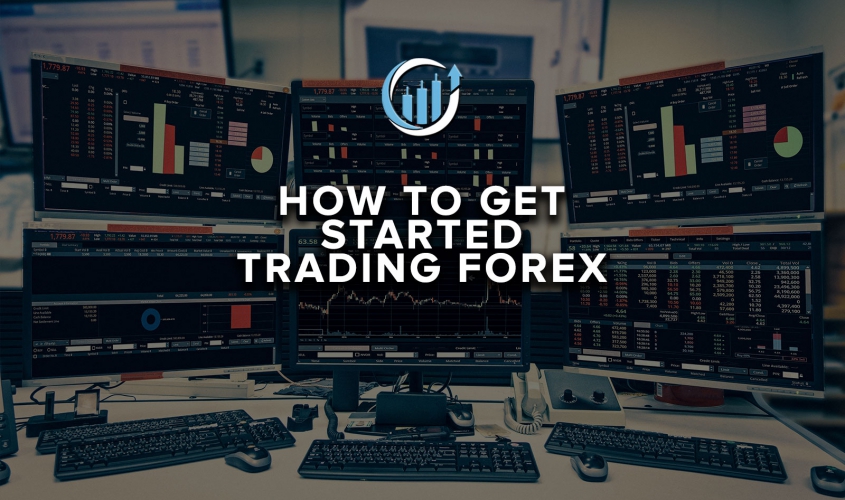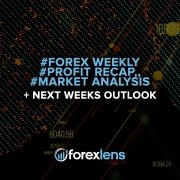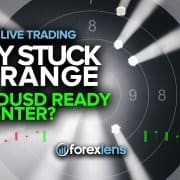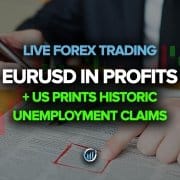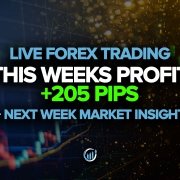So, you want to be a day trader? Not just any day trader, but a Forex trader?
Well friend, you have made an excellent decision.
At Forex Lens, we’ll show you how to get started trading forex. The Foreign Exchange Market (or the forex market) is the world’s largest financial market with over 5 trillion dollars moved each day.
The major players in this market are the international banks such as Citi, JP Morgan Chase, and HSBC just to name a few. Then we have us, the retail traders. Before we discuss how to get into Forex trading, we’ll briefly tell you what Forex trading is.
In layman terms, Forex is the trading of currency pairs.
Traders using varying means of analysis in attempt to forecast whether a given currency pair will rise or fall.
For example, let’s say we forecast EURUSD will rise and it does just that. We can expect to make profit given that we clear any swaps (fee of holding a position overnight) or other brokerage fees. Conversely, if EURUSD falls instead of rises, going against our forecast, we’ll experience a loss (which can be limited via using a stop loss).
Now that you have gotten some very basic, and we mean BASIC knowledge of Forex, it’s time to get used to the trading software you’ll be most likely using. We recommend installing:
- MetaTrader 4 Application
- TradingView Account
MetaTrader4, or commonly known as MT4 is an application you can download on your desktop. You can also find the mobile version onto your smartphone or tablet in the App Store for iPhone or in the PlayStore for Android devices. MetaTrader 4 is an electronic trading platform widely used by online retail forex traders, and it’s licensed to forex brokers to provide the software to their clients.
You may also like to create an account on TradingView, an easy and intuitive website for forex traders to utilize powerful charting tools to share and view trading ideas within its community. You’ll be able to analyze charts and share your analysis as well as look at other day traders’ analysis to compare ideas.
Once that’s done, you should make a demo (fake money) account on MetaTrader 4 and play around with the application. Practice placing different trades such as market order sells, sell stops, sell limits, market order buys, buy stops and buy limits. We recommend starting with a balance of $10,000 or something more realistic so you can treat it like real money.
Here are some of the different types of trades you can place:
Sell = When you forecast a currency pair will fall.
- Market Order Sell = Entering into a sell position at market price
- Sell Limit = Entering into a sell when price falls to the following price: x.xxx
- Sell Stop = Entering into a sell when price rises to the following price: x.xxx
Buy = When you forecast a currency pair will rise.
- Market Order Buy – Entering into a buy position at market price
- Buy Limit = Entering into a buy when price falls to the following price: x.xxx
- Buy Stop = Entering into a buy when price rises to the following price: x.xxx
x.xxx = a price that you will specify in MetaTrader 4 to activate your limit/stop order.
Now you might say, ” Hey, I kinda know how this works now, I’ve played around on MetaTrader 4, can I start making six figures now?”
The answer is NO!
Forex trading is something that cannot be learnt overnight, or a in a week or month, and especially not on your own. It takes a lot of practice, commitment and the will to find what trading style works for you.
The next step I suggest is for you to either find a forex mentor to teach you how to analyze the forex market or use resources online to learn. Go to TradingView and start analyzing some pairs and place those trades on your demo account.
Ideally, you want to risk no more than 5% capital per trade, which means if the trade hits your stop loss you will not lose more than 5% of your current capital. Try to aim for 5–7% growth per week. Until you can do this on a demo for at least six months, you should not make a live account.
There is an enormous difference between demo and live trading. I can explain what that difference is with one word, psychology. It’s easy to trade nonexistent capital because if you lose it, there are no repercussions. The only way to get the mental strength, the discipline and the ability to trust your instincts is to trade with your own capital.
Now, to make a live account just find any Broker that supports your country of residence and fund the account or you can view a list of our trusted forex brokers. About 95% of traders blow their first account. Heck, I know a few profitable traders who blew their first few. So, I suggest you fund an account anywhere from $1,000 to $2,000 with 1:200 leverage. This is enough equity for you to enter numerous trades, swing trade and allow for a greater margin of error.
Do not get discouraged if you blow your first few accounts, this journey is a long one, and persistence and hard work does indeed payoff (literally).
We hope this article gave you some basic actionable knowledge on how you can get started trading Forex. We’ll be coming out with more articles like these for our beginner forex traders.
Stay tuned for more articles, and happy trading!

